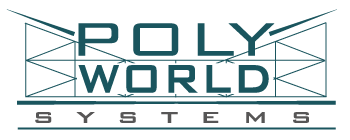Tips and Guides
- In standard packaging, the sheets are supplied on wooden pallets, protected by heavy polyethylene film, stretch film and strapping. The number of sheets is such that a weight of about 1000 – 1200 kg per pallet is achieved.
- The sheets must be transported in suitable vehicles so that the sheets and pallets are completely lying on the flatbed of the vehicle. Straps and blocks, which are necessary to immobilize the pallets during transport, must be positioned so as not to damage the slabs.
- Handling and storing sheets are delicate operations during which damage to the sheets can occur. Therefore, during handling operations, great care must be taken when using forklifts to avoid direct contact between the forks and the sheets, in particular by widening the forks when lifting pallets to minimize pallet deflection. When using belts, the width of which must not be less than 200 mm, it is essential to interpose a wooden board between the belt and the pallet in order to achieve optimum force distribution.
- Handling of the individual sheet, if done by hand, must be done with the sheet on the edge.
- As far as storage is concerned, the sheets should preferably be stored in a dry place, away from heat sources, protected from sun and rain, and checked for the absence of foreign bodies that could damage them. It is good practice to place the sheets on special shelves or leave them on pallets, avoiding, however, overlapping between several pallets: if necessary, it is advisable to place supports between the various pallets to protect the sheets.
- If the individual sheet is stored in a vertical position, measures must be taken to prevent the sheet from bending and buckling.
- Polycarbonate sheets are not walkable and are subject to breakthroughs; therefore, during installation, great care must be taken not to walk on the sheets and to use all the safety systems provided for by current regulations.
- If sealing is required during installation, only neutral silicone should be used, as it is the most compatible with polycarbonate.
- The sheets should only be cleaned with water and mild soap.
- The sheets can also be easily processed using normal workshop tools in common use. Sheets’ cut can be performed with the assistance of a jigsaw and/or cutter, and it is good practice to close any alveoli which appear to be open after cutting.
- The tools used must be suitable for polycarbonate sheets, sharp and well-honed
- The PE protective film must be left on the sheet until installation, in order to avoid errors in identifying the UV protected side and to prevent scratches from handling. It is possible that during mechanical processing the tools that has been used develop high temperatures making it difficult to remove the protective film: in case it is necessary to cool the tool during the processing it is necessary to use air or free of oily emulsions water, which could attack the polycarbonate. If necessary, the machined edges must be finished by removing any residual work with compressed air.
